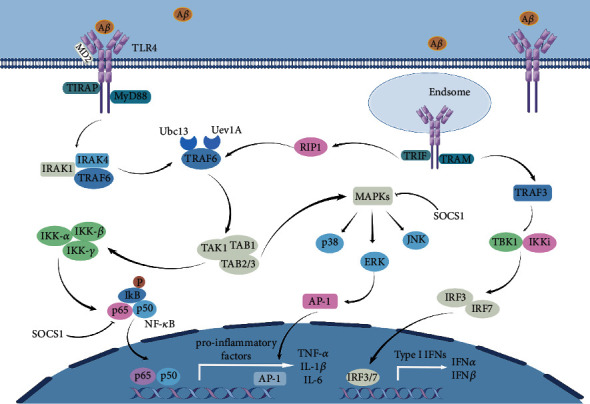Figure 1.

TLR4 binds to ligands and activates downstream pathways in both MyD88-dependent and MyD88-independent pathways. TLR4-MD2 recruits TIRAP and MyD88 and then signals to IRAKs. Then recruit TRAF-6, which with Ubc13 and Uev1A initiate the complex consisting of TAK1, TAB1, and TAB2/3 activation. The complexes of IKK-α, IKK-β, and IKK-γ are activated, promoting NF-κB entry into the nucleus and leading to the release of proinflammatory factors, such as TNF-α, IL-1β, and IL-6. In addition, MAPKs are activated, and MAPKs-induced p38, ERK and JNK lead to AP-1 nuclear translocation. SOCS1 inhibits the TLR4 signaling pathway by affecting NF-κB, MAPK activity, and p65 phosphorylation. TLR4-MD2 leads to endosome formation, resulting in TRAM translocation into the cytoplasm and activation of the TRIF-dependent signaling pathway. TRIF activates TRAF3 and the TBK1/IKKi complex, leading to phosphorylation of the interferon regulatory factors IRF3 and IRF7, which induce type I IFN gene expressions, such as IFNα and IFNβ. Besides, TRIF interacts with RIP1, which activates the TAK1 complex and NF-κB (this figure is made using the Figdraw).
